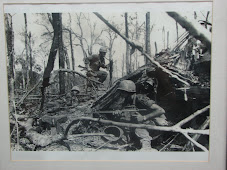Changing Rights and Freedoms: Aboriginal People – Review Sheet
Government Polices of Segregation and Protection
From the middle of the nineteenth century until 1910, laws were passed to separate Aboriginal people
from white Australians, and Aboriginal people from each other. By the 1920s, disease, despair and
dispossession had led to a rapid decline in the size of the Aboriginal population, causing many in the
white community to believe that the Aboriginal race was ‘dying out’. As a consequence, many
Aboriginal people were sent to live on reserves, missions or stations. The Christian missions provided
some protection for Aboriginal people but they also attacked Aboriginal cultural and spiritual beliefs
in their aim to ‘civilise’ and spread Christianity. It was only in the most remote areas of Australia
that Aboriginal people remained on their traditional land, living independent lives.
Government regulations and legislation controlled the daily life of Aboriginal people in the 1930s.
Permission was required when marrying, obtaining work or moving on or off a reserve. Control
of the most basic responsibilities, such as money and personal property, was denied.
Assimilation
In 1937, state governments followed policies of Assimilation. The aim was assimilate Aboriginal
people into white society. This meant that they were encouraged to abandon Aboriginal cultures
and meant that they were live like non-Aborigines. In 1951, Paul Hasluck, the newly appointed
Minister for Territories in the Menzies federal Government, stated that ‘…in the course of time, it
is expected that all persons of Aboriginal blood or mixed blood in Australia will live like white
Australians do’. Under the policy large numbers of Aboriginal children were taken away from
their parents and fostered or adopted by white families. These children are now called the
‘Stolen Generations”, continuing in some places until the 1970s. In New South Wales alone more
than 10,000 children were taken.
Integration
In 1965 the federal government replaced the Assimilation policy with a new policy: Integration.
For the first time a government policy recognised the right of Aboriginal people to run their
own affairs, keep their customs and be equal to other Australians. The government also finally
recognised that sections of the Australian Constitution discriminated against Aboriginal people
and that a referendum was needed to change those sections.
Self Determination
The election of the Whitlam Labor Government in 1972 was a turning point in Aboriginal rights.
Spending on Aboriginal programs was greatly increased and Aboriginal legal and medical services
were founded. The National Aboriginal Consultative Committee (NACC) was established as the
first nationwide body to represent Aborigines and steps were taken to recruit indigenous people to
decision making levels in the Commonwealth Public Service. In 1972 the government introduced
the Aboriginal policy of Self determination. The policy recognised the rights of Aboriginal people
to live traditional lifestyles if they wished to do so and aimed to help Aboriginal communities to
determine their own future. The Whitlam Government also made secondary education grants
available for all Aboriginal students and established an inquiry under Justice A.E. Woodward to
report on how Aboriginal people in the Northern Territory should be given land rights.
1965 Freedom Rides
Inspired by the freedom rides in the USA, the Student Action for Aborigines (SFA), a group of
students at the University of Sydney, decided to organise a similar protest. Early in 1965 the
group set out in a bus for northern New South Wales. Among its leaders was Charles Perkins,
who was the first Aboriginal Australian to graduate from a university and one of two Aboriginal
students on the bus. The protestors wanted everyone to know that Aboriginal people from reserves
and on the fringes of country towns were not allowed in many clubs, hotels and swimming pools and
had to sit in the front stalls at pictures theatres. They aimed to confront discrimination in towns
such as Moree and Walgett. They held protest demonstrations in front of RSL clubs and
swimming pools that restricted the entry of Aboriginal people. The freedom riders had the
sympathy of many country people but they also encountered violence. The important result
was that the protest succeeded in making many people in the cities aware of the existence of
discrimination in rural areas. Such increased awareness led to growing public support for
measures to abolish all forms of discrimination against Aboriginal Australians.
1967 Referendum
Although Aboriginal people were able to vote in federal elections after 1962, they still were not
counted in the census of the Australian population. Only state governments could make laws
affecting Aboriginal people living in that state. This meant that the rights granted to an
Aboriginal person in NSW might be lost as soon as that person moved to another state with
different laws. In October, 1966, Australia signed the International Convention on the Elimation
of All Forms of Racial Discrimination and, as a result, Aboriginal people renewed their efforts
to be counted as Australians in the census. The only way to achieve this was to alter Australia’s
Constitution. Section 127 of the Constitution stated that Aborigines were not to be counted in
the census. Aboriginal people also wanted the Commonwealth Government to be able to make
laws that would apply no matter where they lived in Australia but paragraph xxvi, section 51
of the Constitution prevented this. The only way to change Australia’s Constitution is to hold a
referendum in which citizens vote ‘yes’ or ‘no’ to a question. On the 27 May 1967, the Holt
Liberal government held a referendum to ask the Australian people if they would say ‘yes’ to
the above changes. When the final vote was counted about 90 percent votes were ‘yes’ which
allowed the Constitution to be changed.
As a result of the successful ‘yes’ vote there was an expectation that Aboriginal people would
get equal rights and opportunities. This did not happen. State governments were still able to make
their own laws affecting Aboriginal people and the Commonwealth’s new power to pass laws was
not used for nearly 10 years.
Land Rights
Definition – The continuing struggle of Indigenous Australians to regain possession of their lands.
In the late 1960s and early 1970s, Aboriginal rights campaigns became more militant. They also
gained wider support as many non-Aboriginal Australians became aware of the injustices suffered
by Aboriginal people since white settlement.
In 1963, Aboriginal people at Yirrkala in the Northern Territory sent a petition on bark to
the federal parliament, protesting about the intention of the giant company Nabalco to mine
bauxite for aluminium on Aboriginal sacred land.
Wave Hill protest – in 1966 Aboriginal stock workers went on strike on a NT cattle station
over a pay dispute and rights to land.
Aboriginal tent embassy – a group of tents was erected on the lawns outside Parliament
House in Canberra on Australia Day 1972. The tents were erected to embarrass the McMahon
Coalition Government which would not recognise land rights.
Native Title and the Mabo Decision
Definition of native title – legal recognition of the existence of indigenous people’s law and land
ownership before 1788.
In the late 1970s, the Queensland government began to deny some of the Meriam Islanders the use
of their lands. In 1982 a group of men led by Eddie Mabo challenged the government’s rights to do
this. They wanted legal recognition of their continued ownership rights over particular plots of
land on their island. On 3 June 1992, the High Court handed down its historic decision in favour
of Eddie Mabo and overturning the legal fiction that Australia had been terra nullius (land belonging
to no one) when the British took possession of it in 1788.
Subscribe to:
Post Comments (Atom)



No comments:
Post a Comment